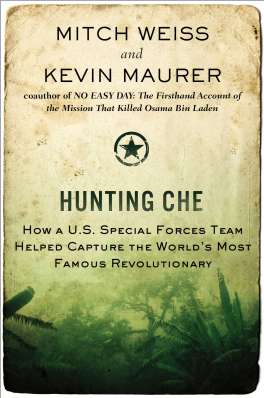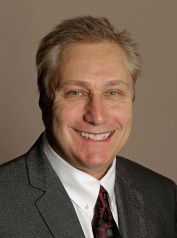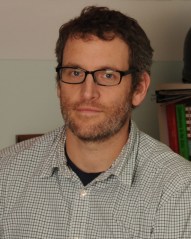Che Guevara, in 1960.
Ernesto “Che” Guevera has morphed from historical figure to historic icon since he was hunted down and killed by U.S.-trained Bolivian forces in 1967. How much of the Argentine Marxist’s story is fact, and how much is fantasy? More vitally, what did the mission to capture him reveal about the U.S. military and its operations with allied forces? What, if anything, can that experience teach us about our efforts in Afghanistan and similar enterprises?
Pulitzer winner Mitch Weiss and Kevin Maurer, co-author of No Easy Day: The Firsthand Account of the Mission That Killed Osama bin Laden, attempt to answer these questions in their new book, Hunting Che: How a U.S. Special Forces Team Helped Capture the World’s Most Famous Revolutionary. They recently conducted this email chat with Battleland:
Sum up Che Guevara for us.
MW: Simply put, Che was a revolutionary.
He believed the United States was responsible for most of the economic and social problems in the Third World — especially in Latin America. So Che devoted his life to revolution — first fighting alongside Fidel Castro in overthrowing Cuban Dictator Fulgencio Batista in the late 1950s, then trying to export Cuban-style revolution to Africa and South America.
In the years since his death, Che has become a mythical figure. His famously fierce beret-wearing image glowers from T-shirts and posters. He’s been the subject of dozens of books. He’s been celebrated in movies.
You can understand Che’s Hollywood appeal: He was young, handsome and articulate. With his green fatigues, scraggly beard and “power to the people” message, Che was a rock star. (Maybe it was more revolutionary chic. Remember, this was the 1960s.)
His death in Bolivia fighting for his ideals only added to the myth.
But there was a dark side of Che: he was ruthless. After the Cuban revolution, he was put in charge of La Cabana, an 18th Century prison in Havana, where hundreds of Cuban “war criminals” and “political prisoners” were executed. Che, who had Castro’s ear, had a chance to unite Cuba. Instead, he helped push Cuba toward a Soviet-style government that brought the nation to the brink of disaster.
What drove him?
MW: Che had a social conscience.
He grew up in a middle-class family in Argentina and went to medical school. But his life changed when he and a friend took a motorcycle trip across South America in 1952.
In country after country, Che saw that a few wealthy people controlled the riches and resources while the rest struggled through lives of horrifying poverty. He promised he would do something about it.
For Che, doing something meant revolution.
How much of a danger did he pose to the U.S.?
MW: At first, Che was more of a philosophical threat than a military one. He was the inspiration for revolutionaries all over the world.
He wrote how-to books on revolution — with inspirational advice: “The duty of a revolutionary is to make revolution.”
He preached that a small group of dedicated guerrillas based in a rural haven could quickly overthrow an established government and liberate a nation.
In the 1960s, leftist guerrilla movements were threatening the balance of power in the Cold War. The U.S. was fighting in Vietnam, and by 1967, it had become increasingly unpopular at home — especially as casualties mounted.
Che became a military danger when he targeted Bolivia. As he put it, he wanted to start “two, three or many Vietnams” in Latin America and ultimately bring the United States to its knees.
What is the most surprising thing you learned while reporting Hunting Che?
MW: That 40-plus years after his death, Che is celebrated in Bolivia, while the soldiers who captured him are largely forgotten.
Wherever you go in Bolivia, you see T-shirts, posters and merchandise bought and sold by people who have no idea who Che was or what he stood for.
Tell about the U.S. unit that tracked him down.
MW: This is one of the most fascinating parts of the story.
The U.S. sent a team of Green Berets to Bolivia to turn campesinos into a fighting unit that would hunt Che in the Bolivian jungles.
The U.S. team was led by Ralph “Pappy” Shelton who was straight out of central casting. Born in Mississippi, Shelton dropped out of school in the 10th grade to pick cotton and work odd jobs to help his family. He joined the military as a private and worked his way up to a major.
A decorated Korean War veteran, the Bolivian mission was his last. Not only did Shelton hand pick the team, he brought along his beat up Gibson acoustic guitar — the one he purchased for a few bucks from a pawn shop outside Fort Bragg, N.C.
Consider this picture: a tough-as-nails major strumming his guitar on the front porch of a general store in a village deep in the jungle. He’d use that six-string to build rapport with the people.
At night, Shelton would start playing, then villagers would run home and grab their instruments. Before long they’d all be jamming in the jungle.
Afterward, villagers would open up and share information. The other team members followed Shelton’s lead. Like good teachers, Shelton’s men prepared daily lesson plans and patiently trained the soldiers.
Who captured him?
KM: The Bolivians.
Members of the Bolivian Rangers got a tip from a farmer and trapped him in a valley.
What makes it so remarkable is the Rangers were just conscripts a few months before. But the training provided by the Green Berets turned them into capable soldiers.
The mission has a lot of similarities to what the 7th Special Forces Group did in Colombia or what all of the Special Forces Groups did in Iraq and Afghanistan. The real power of the Special Forces is to work by, with and through indigenous forces.
This mission is an early example of just how successful that can be.
Who killed him?
KM: The Bolivians.
We found no evidence that the Americans killed him. In fact, Felix Rodriquez told us and wrote in his book how the CIA wanted Che alive.
Gary Prado, the Bolivian commander, said the same thing.
We’ve heard all kinds of stories about American agents in the village but except for Rodriquez, we didn’t find any evidence.
Like the Bin Laden raid, there is a lot of legend surrounding it. I think people want a Hollywood action movie where the SEALs marched up the stairs, said a pithy line, and then shot Bin Laden in the face. It never works out that way.
MW: Agreed. The Bolivian high command wanted Che dead.
They knew a trial would attract international attention. The high command was worried that Cuban soldiers — or Che supporters — would plan his escape. They didn’t want the headache.
So Bolivian President Rene Barrientos Ortuno ordered Che’s execution, then tried to cover it up by saying Che had died in combat.
How similar was the hunt for Che to the hunt for Osama bin Laden?
KM: It was similar in that in the eyes of American planners both men posed a grave threat to the United States.
I think the hunt for Osama bin Laden was a much bigger deal because not only was he actively plotting against the United States, but he actually carried out a successful attack.
Che posed a different kind of threat.
He was more of an agitator until he starting organizing rebels in the Republic of Congo. When that failed, he went to Bolivia. That’s when he became a big threat: now Che wasn’t just talking revolution, he was trying to export it.
He has become a role model for disaffected youth the world over. Is this a good thing?
KM: I am not sure it is good or bad because I think once you get below the surface, Che is complicated and arguably more sizzle than substance.
Che had charisma, which is what made him a threat to the United States.
That charisma is evident even now. I’ve gotten into the habit of spotting and counting Che T-shirts and stickers. You’d surprised how often you see them. The problem is what Che said he stood for was so far from a collection of shirts and stickers.
MW: Exactly. Again, there’s the good Che and bad Che.
The good Che had a social conscience. The bad Che could be brutal, especially when someone disagreed with his political views.
KM: Much of what is written about Che is from his point of view. All we tried to do with Hunting Che is to tell a good story.
It helped that it was an exciting story.
We set up the structure in a way that the legend of Che hangs over the narrative so the quest to find him is the engine that drives the characters. The goal was to drop the reader in the story and let them follow the hunt.
We never really tried to analyze the politics of the time. There are already several very good books out there that talk about the bigger political issues.
We just tried to write a nonfiction thriller from the point of view of a small group of Americans and their Bolivian allies.





